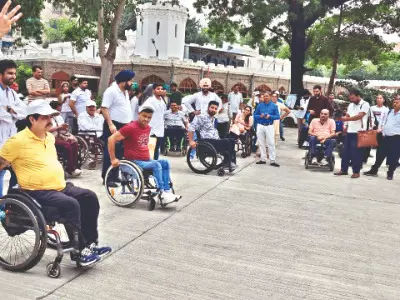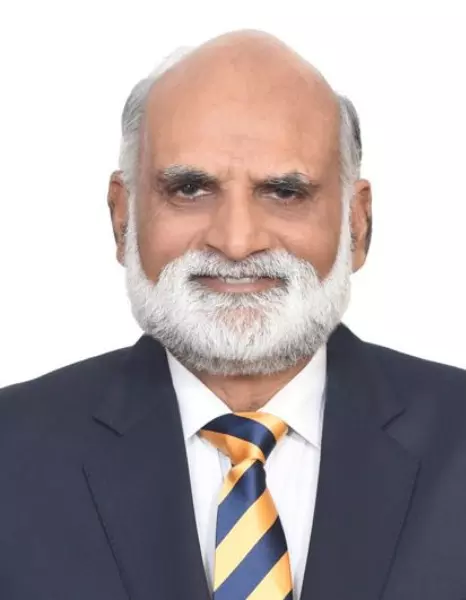Fragility to Resilience
On World Spinal Cord Injury Day, we are reminded to raise awareness, advocate equal opportunities, and support dignity, rehabilitation, and inclusion for millions living with spinal cord injuries

The Spinal cord is one of the most critical parts of the human body. The ‘World Spinal Cord Injury (SCI) Day’ is observed annually on September 5 to raise public awareness about the challenges faced by individuals with spinal cord injuries and to promote inclusivity and prevention. This global initiative was established by the International Spinal Cord Society (ISCoS) in 2016 to encourage better support for those affected and to highlight the need for appropriate care, rehabilitation services, and preventative measures.
Active participation and support are essential in promoting awareness around spinal cord injuries. In this regard, the ‘Illness to Wellness Foundation’ (ITWF) is dedicated to promoting holistic well-being by raising awareness through health education, sustainable hygiene, lifestyle changes, and blending ancient wisdom with modern technology. Launched in 2014, the Illness to Wellness (ITW) Campaign focuses on preventive care and creating a healthier India through education and community engagement. The campaign raises awareness about key health issues, including personal hygiene, especially handwashing in schools, mental wellness, and lifestyle-related diseases. Through community engagement and educational programs, the campaign has expanded its reach across multiple states, striving to build a healthier and more informed India.
The role of the spinal cord is to conduct information from the brain to the periphery and vice versa. It is organised segmentally, with 31 pairs of spinal nerves emanating from it. An injury to the spinal cord may disrupt this conduit between the body and brain and can lead to deficits in sensation, movement, autonomic regulation, and death.
According to the World Health Organisation (WHO), in 2021, approximately 15.4 million people globally were living with spinal cord injury (SCI), and it’s estimated that each year, around 0.7 million to 1.2 million people experience a new spinal cord injury. In India, it’s estimated that in 2025, around 1.5 million people are living with a spinal cord injury, and around 20,000 new spinal cord injury cases occur every year.
The majority of persons affected by spinal cord injuries are males in the age group of 16-30 years, signifying a higher incidence in the young, active and productive segment of society. Road accidents, trauma, falling, sports injuries, along with violence are the leading causes of Spinal Cord Injuries.
Spinal Cord Injury (SCI) is one of the most debilitating conditions afflicting humans. It not only physically disables the individual but also has the potential to worsen the quality of life of the individuals, and their families, socially, economically and psychologically. Spinal cord injury (SCI) is a life-threatening condition that carries a high risk of morbidity and mortality. According to the WHO, the mortality risk increases with injury level and severity and is strongly influenced by the availability of timely, quality medical care. Prior to Independence, there was no facility dedicated to spinal injuries in India, and the concept of rehabilitation took time to grow amongst the medical fraternity. Patients afflicted with SCI require dedicated monitoring and management for life, and therefore, it becomes imperative to provide support to the Spinal Injury Centres catering to their needs in the country.
Misconceptions, negative attitudes, and mobility barriers prevent many individuals with spinal cord injuries from fully participating in societal activities, in the schools, colleges and workplaces. As a result, many individuals with SCI experience symptoms of depression, which leads to a delay in their functional recovery and overall health.
Spinal cord injuries may also result from a variety of preventable causes, including poor sitting and standing postures, improper heavy lifting, weakened bone structures, fractures caused by degeneration of bones or arthritis, workplace accidents, and high-risk activities such as unsafe deep diving during swimming.
To prevent these problems, correct sitting posture, ensuring computer screens are at eye level, using back support while sitting, following safe lifting techniques, using ergonomic chairs, practising safe diving, observing road safety, being cautious on slippery surfaces, and taking care when working or moving at heights can help to reduce incidents of Spinal Cord Injuries.
There is a need to raise awareness, advocate rights, break the barriers, stand for equal opportunities, and dignity of life for Persons with Spinal Cord Injuries (PwSCI). We need to remember that Spinal cord injury is not the end of life; it might be a setback, but it can also be the beginning of a determined journey towards much greater acceptance and qualitative integration within society.
The Department of Empowerment of Persons with Disabilities (DEPwD), Ministry of Social Justice and Empowerment (MSJE), Government of India, supports spinal cord injury (SCI) efforts through the Financial Assistance to Spinal Injuries Centres (ASIC) scheme. The objective of the scheme is to provide financial assistance for the setting up and operations of the Spinal Injuries centres across India, including existing centres, so as to enable patients with spinal injuries to lead their lives to the fullest extent. These initiatives provide financial aid for infrastructure and rehabilitation, capacity building, raise awareness, and promote the comprehensive care and empowerment of PwSCI.
The Indian Spinal Injury Centre in New Delhi and the State Sports Injury Centre at SMS Medical College, Jaipur, are already operational with support from the ASIC Scheme. Additional centres at the state level are currently in various stages of development.
Individuals, healthcare facilities, corporates, NGOs and media houses should come forward and work proactively with the government for awareness of the preventive practices, provide medical and financial assistance, support rehabilitation services and create employment opportunities for a sustainable livelihood for persons with spinal cord injuries. I believe that together we can address this subject in a much more impactful and effective manner in the times to come.
Views expressed are personal



